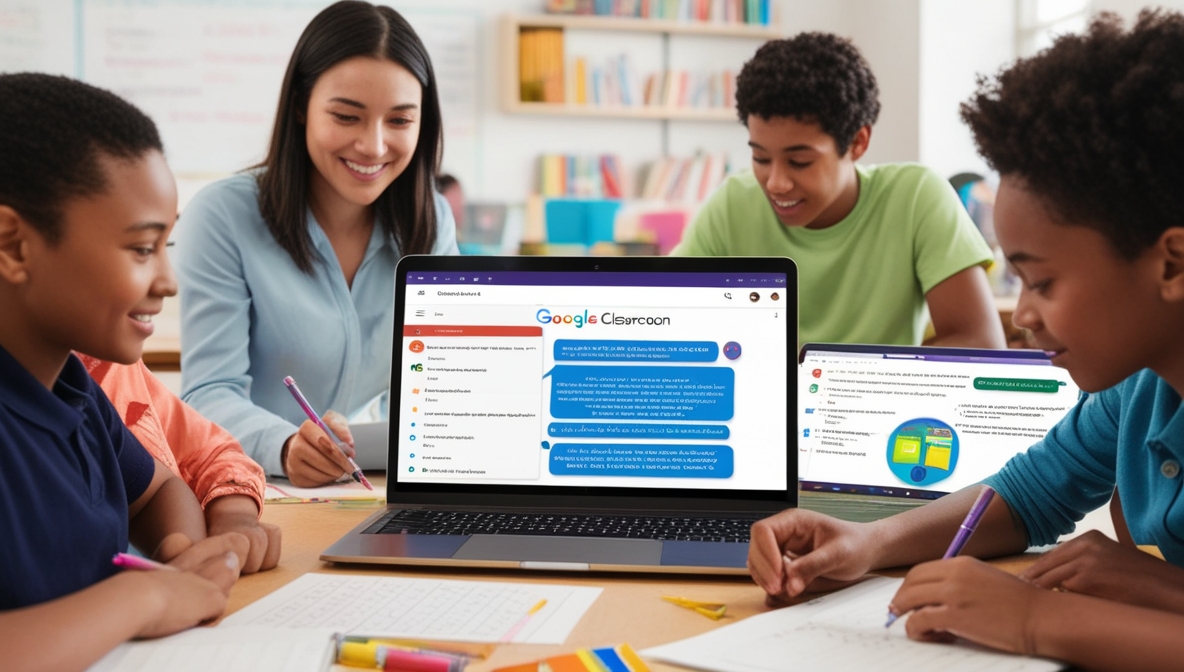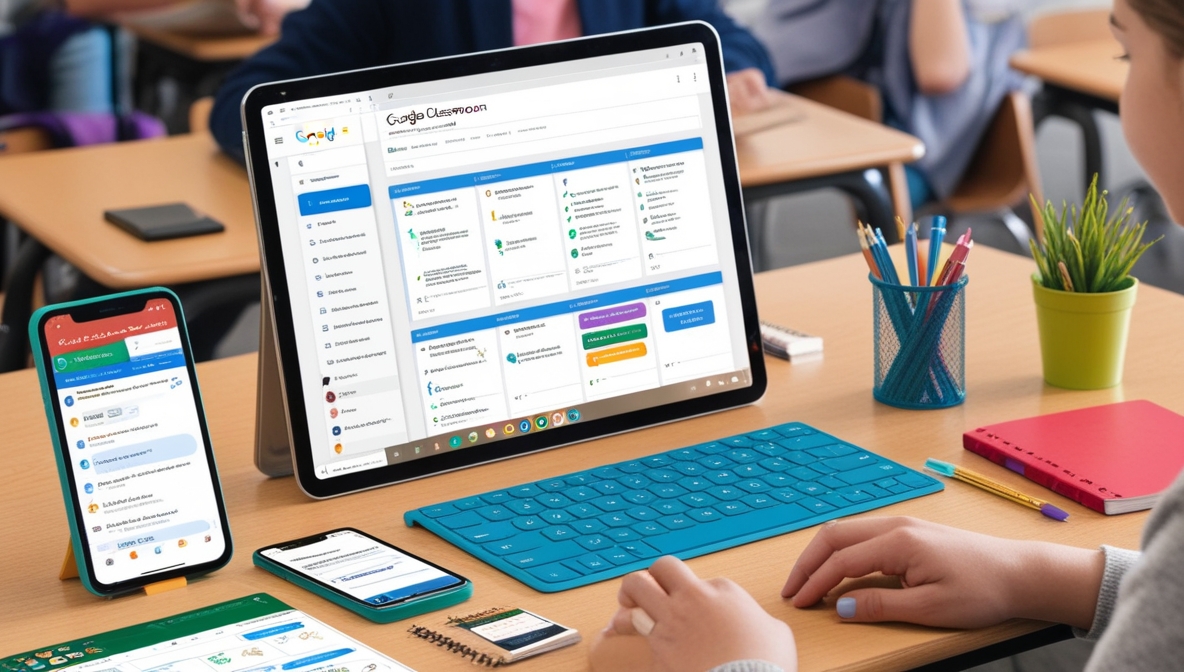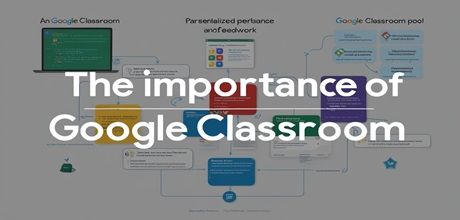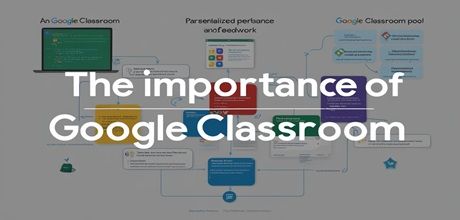The Importance of Google Classroom has revolutionized the educational landscape by providing a streamlined, efficient, and user-friendly platform for educators and students. The importance of Google Classroom can be explored through its various features, its impact on teaching and learning, and its role in fostering a more connected and collaborative educational environment. This essay will delve into these aspects to highlight the significance of Google Classroom in contemporary education.
1. Ease of Use and Accessibility
Google Classroom’s intuitive interface and integration with other Google services make it exceptionally user-friendly. Teachers and students can easily navigate the platform, access course materials, and communicate seamlessly. The accessibility extends beyond traditional classroom settings, enabling learning anytime and anywhere. This is particularly crucial in ensuring educational continuity during unexpected disruptions, such as the COVID-19 pandemic, where physical classrooms were closed.
2. Enhanced Organization and Management
One of the primary benefits of Google Classroom is its ability to streamline the organization and management of coursework. Teachers can create classes, distribute assignments, and provide feedback all within the platform. The system automatically sorts assignments by due date, subject, and student, reducing the administrative burden on educators. For students, the platform offers a centralized location for all their coursework, deadlines, and grades, promoting better organization and time management skills.

3. Facilitating Communication and Collaboration
Google Classroom enhances communication between teachers and students. The platform’s integrated messaging system allows for direct and instant communication, helping clarify doubts and provide timely assistance. Additionally, the ability to post announcements and updates ensures that all students are informed about important class events and deadlines.
Collaboration is another critical aspect of Google Classroom. The platform supports group projects and peer reviews, allowing students to work together on assignments and share insights. Tools like Google Docs, Sheets, and Slides are seamlessly integrated, enabling real-time collaboration on documents and presentations. This fosters a collaborative learning environment where students can learn from each other and develop teamwork skills.
4. Personalized Learning
Google Classroom supports differentiated instruction, catering to the diverse learning needs of students. Teachers can provide tailored resources, assignments, and feedback to individual students or groups based on their learning styles and abilities. This personalization helps address the unique challenges faced by each student, promoting a more inclusive and effective learning experience.
Moreover, the platform’s integration with Google Forms allows for the creation of quizzes and surveys that can provide immediate feedback. This immediate feedback loop helps students identify their strengths and areas for improvement, guiding their learning process and promoting self-directed learning.
5. Integration with Other Educational Tools
Google Classroom’s compatibility with numerous educational tools and applications significantly enhances its functionality. Teachers can integrate various apps, such as Khan Academy, Quizlet, and Edpuzzle, to provide a more interactive and engaging learning experience. These integrations allow educators to incorporate a variety of multimedia resources and activities into their lessons, catering to different learning preferences and keeping students engaged.

6. Paperless Environment
The shift towards a paperless environment is another significant advantage of Google Classroom. By digitizing assignments, resources, and feedback, the platform reduces the need for physical materials. This not only leads to cost savings but also supports environmental sustainability. Additionally, a paperless system simplifies the process of storing and retrieving documents, making it easier for teachers and students to keep track of their work.
7. Enhanced Assessment and Feedback
Assessment and feedback are crucial components of the learning process. Google Classroom provides various tools to facilitate both formative and summative assessments. Teachers can create quizzes, assign grades, and provide detailed feedback directly within the platform. The ability to track student progress over time helps educators identify learning trends and intervene when necessary.
The platform also supports peer assessments, allowing students to review and provide feedback on each other’s work. This not only encourages critical thinking and self-reflection but also helps students develop their evaluative skills.
8. Parental Involvement
Google Classroom enhances parental involvement in their children’s education. Parents can receive updates on their child’s progress, upcoming assignments, and class announcements through email summaries. This keeps parents informed and engaged, enabling them to support their child’s learning journey more effectively.
9. Scalability and Customization
Google Classroom is scalable and can be customized to fit the needs of different educational institutions, whether it’s a small primary school or a large university. Institutions can create multiple classes, manage large numbers of students, and customize the platform’s features to align with their educational goals and policies. This flexibility ensures that Google Classroom can support a wide range of educational settings and requirements.

10. Professional Development for Teachers
Google Classroom is also a valuable tool for teachers’ professional development. The platform offers various resources and training programs to help educators enhance their teaching practices and integrate technology into their classrooms effectively. By staying updated with the latest educational tools and techniques, teachers can improve their instructional strategies and provide a better learning experience for their students.
Conclusion
In conclusion, The Importance of Google Classroom plays a pivotal role in modern education by providing a comprehensive, flexible, and user-friendly platform for teaching and learning. Its ease of use, organizational capabilities, and support for communication and collaboration make it an indispensable tool for educators and students alike. The platform’s ability to facilitate personalized learning, integrate with other educational tools, and promote a paperless environment further underscores its importance. Additionally, Google Classroom enhances assessment and feedback processes, fosters parental involvement, and supports professional development for teachers. As education continues to evolve in the digital age, Google Classroom will remain a crucial component in creating a connected, efficient, and inclusive learning environment.

42bs7y
1ovuc5
This is very interesting, You’re a very skilled blogger. I have joined your rss feed and look forward to seeking more of your magnificent post. Also, I’ve shared your website in my social networks!
Temukan peluang menang besar di Shark Bounty : Slot Online Gacor yang Menjanjikan
Informasi akses situs Sigma slot
164j4y
annp61
Rediscover your CD collection with this top-rated clock radio and CD player combo. Ideal for bedrooms, offices, or kitchens, it plays your favorite CDs while also offering a reliable alarm clock radio function. Dual alarms let you set separate wake-up times, and the clear digital display is easy to read day or night. With its stereo radio alarm clock capabilities and optional remote control, this CD alarm clock radio ensures comfort, convenience, and crisp audio in one stylish package. A top choice for those wanting the best CD alarm clock for sound and function.
Good info. Lucky me I reach on your website by accident, I bookmarked it.
you’re really a just right webmaster. The web site loading pace is amazing. It sort of feels that you are doing any distinctive trick. Moreover, The contents are masterpiece. you’ve performed a magnificent process on this matter!
F*ckin¦ awesome issues here. I am very satisfied to peer your post. Thanks so much and i am having a look ahead to touch you. Will you kindly drop me a mail?
Very interesting information!Perfect just what I was searching for!
Wow, superb blog layout! How long have you been blogging for? you made blogging look easy. The overall look of your web site is fantastic, let alone the content!
he blog was how do i say it… relevant, finally something that helped me. Thanks
I like this web site very much, Its a very nice billet to read and receive info .
That’s a great point about responsible gaming! It’s cool to see platforms like pokebet88 app focusing on a fun, almost nostalgic experience – a playful approach can really enhance enjoyment. Definitely key to remember balance!
It’s smart to prioritize secure platforms – KYC verification, like with funbingo bet login, is key! Quick deposits (GCash, PayMaya) are convenient, but always double-check those limits & responsible gaming tools. Stay vigilant!
Vor allem können Spieler so komplett ohne Echtgeldeinzahlung spielen und zum Schluss profitieren.
Die Freischaltung des Bonusgeldes erfolgt spielend einfach.
Hier kannst Du gratis an beliebten Slots spielen und echte Gewinne kassieren,
wenn Du die Bonusbedingungen erfüllst.
Nachfolgend erfährst du, welche Bonusangebote auf dich
warten. Bei einemNo Deposit Casino Bonus 2025, musst du Nichts einzahlen,
hier wird dir tatsächlich Guthaben geschenkt,
mit dem du spielen kannst. Abschließend haben wir ihnen die
wichtigsten Fragen zu den Freispielen in den Online Casinos nochmals kurz und knapp zusammengestellt.
Playtech Casino Spins werden vornehmlich im Zuge der
Promotionen-Aktionen für die Stammkunden angeboten, wobei die gültigen Spielautomaten oft gewechselt werden.
References:
https://online-spielhallen.de/hitnspin-casino-boni-ohne-einzahlung-test-dez-2025/
The impact of gambling extends beyond the individual, affecting their social surroundings.
Referred to as problem gambling, this condition arises when the habit interferes with or harms one’s personal, familial, or professional
life. Nonetheless, this excitement can sometimes evolve into
an addiction. The appeal of gambling stems from its inherent uncertainty and the exhilaration of taking risks.
We may update our Privacy Policy from time to time. We strongly advise you to review
the Privacy Policy of every site you visit.
Normally, on Australian gambling sites, people will get some options – testing and true gaming.
Considering to play Au casinos online, in place of the traditional offline alternatives, certainly gives
its privileges, simplified access appearing to be among
the first to think over. When practiced in moderation, it can offer a pleasurable,
communal experience that facilitates relaxation and even mental stimulation in games
that demand skill and strategy. We have no control over,
and assume no responsibility for, the content, privacy
policies, or practices of any third-party sites or services.
That will aid in the event people get used to the concept of
game prior to the moment one starts using real money.
Test videos allow clients a better insight into the slot machine game features.
References:
https://blackcoin.co/rooli-casino-in-depth-review/